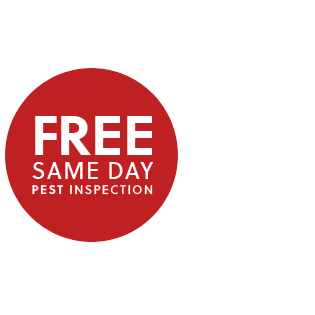Pests You Encounter the Most: Roof Rats
Clark, your neighborly pest control, lawn care and termite control expert, is often asked: “What are the most popular pests in California?”
The term “popular” isn’t one that we often use around the Clark offices, because when pests become a nuisance or threaten our customers’ homes, they are not very popular.
We prefer to use the term “most frequently encountered pests.” In California’s diverse ecosystem there are plenty of pests to encounter.
Clark Pest Control’s chief pest expert and Director of Learning & Technical Services, Darren Van Steenwyk, pulled pest trend data from across the state and came up with a list of the five pests that California homeowners are most likely to encounter in or around their homes.
The list includes:
We’re kicking off a series of blog posts that will place the spotlight, something all pests detest, on these unwanted visitors. Pests avoid the spotlight, as they prefer to live and eat in areas of your home where they are undisturbed and allowed to pursue their often unhealthy and potentially destructive ways.
Clark will also share valuable information on why these pests are so common, where you might encounter them in your home, and what you can do to reduce your risk.
This week, we meet the roof rat, a species whose population is exploding up and down the Pacific Coast, from Washington state to southern California.
- The adult roof rat is about 14 inches long, with a body length of six inches and a tail length of eight inches.
- Its fur is soft, and color can be sooty black on the back and gray underneath.
- The roof rat has large ears and eyes and a pointed muzzle, and its body is sleeker than that of the Norway rat.
- Once the roof rat has established a harborage, it tends to follow the same route to its food and/or water source, keeping its path clear of debris.
- A roof rat will feed on practically anything, but it prefers seeds, nuts, fruits, and berries when in season.
- The roof rat is nocturnal and, unlike the house mouse, it will shun new objects introduced into its territory.
- The roof rat is well known for damaging and destroying material by gnawing. It eats and contaminates stored food.
- Its bite is also a risk to humans, as this rat is a vector, or carrier, of disease pathogens such as salmonellosis and leptospirosis.
Why is the roof rat so common? Because they primarily live outdoors, in the natural habitat in our urban and suburban areas. Their pest pressure has not let up in over a year; normally we see seasonality to their activity that reduces in summer and fall.
Where might you most often encounter or notice roof rats? They’re usually first noticed running around the yard and fence lines are night. Once they can find a way into a structure, they will enter the garage or shed first, because those are quieter places for the rodents to become established. From there, they usually will work their way into the house through the attic, pipes, and other hidden routes.
Is there anything you can do to reduce your home’s risk of getting roof rats? Keep your house sealed up to prevent access. Also, remove as many potential food sources in the yard, including dropped fruit from fruit trees, spilled bird seed, and slugs and snails, as all of these are common treats for roof rats.
If you have concerns about roof rats around your home, call or text California’s trusted, friendly rodent management expert, Clark , at (800) WE-NEED-YOU (936-3339) or send an email to clarkcares@clarkpest.com.
Until next time, the pest management professionals at Clark Pest Control thank you for helping to keep unwanted pests out of your home.


